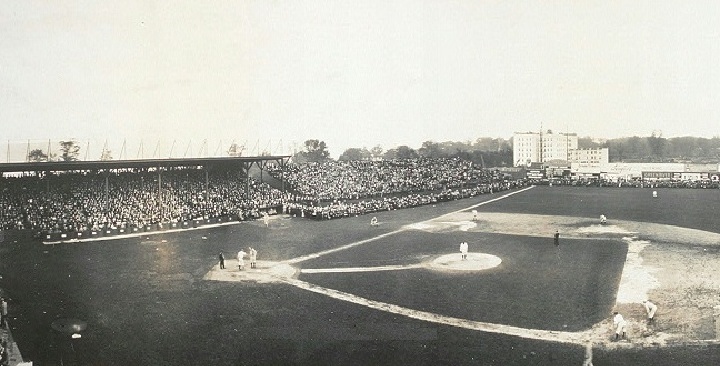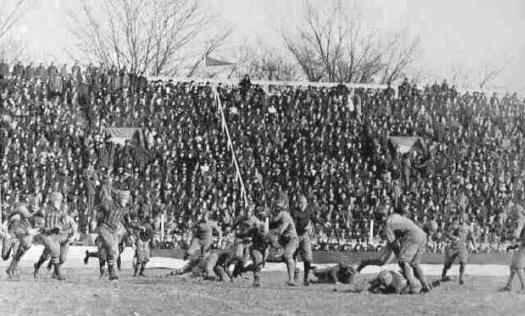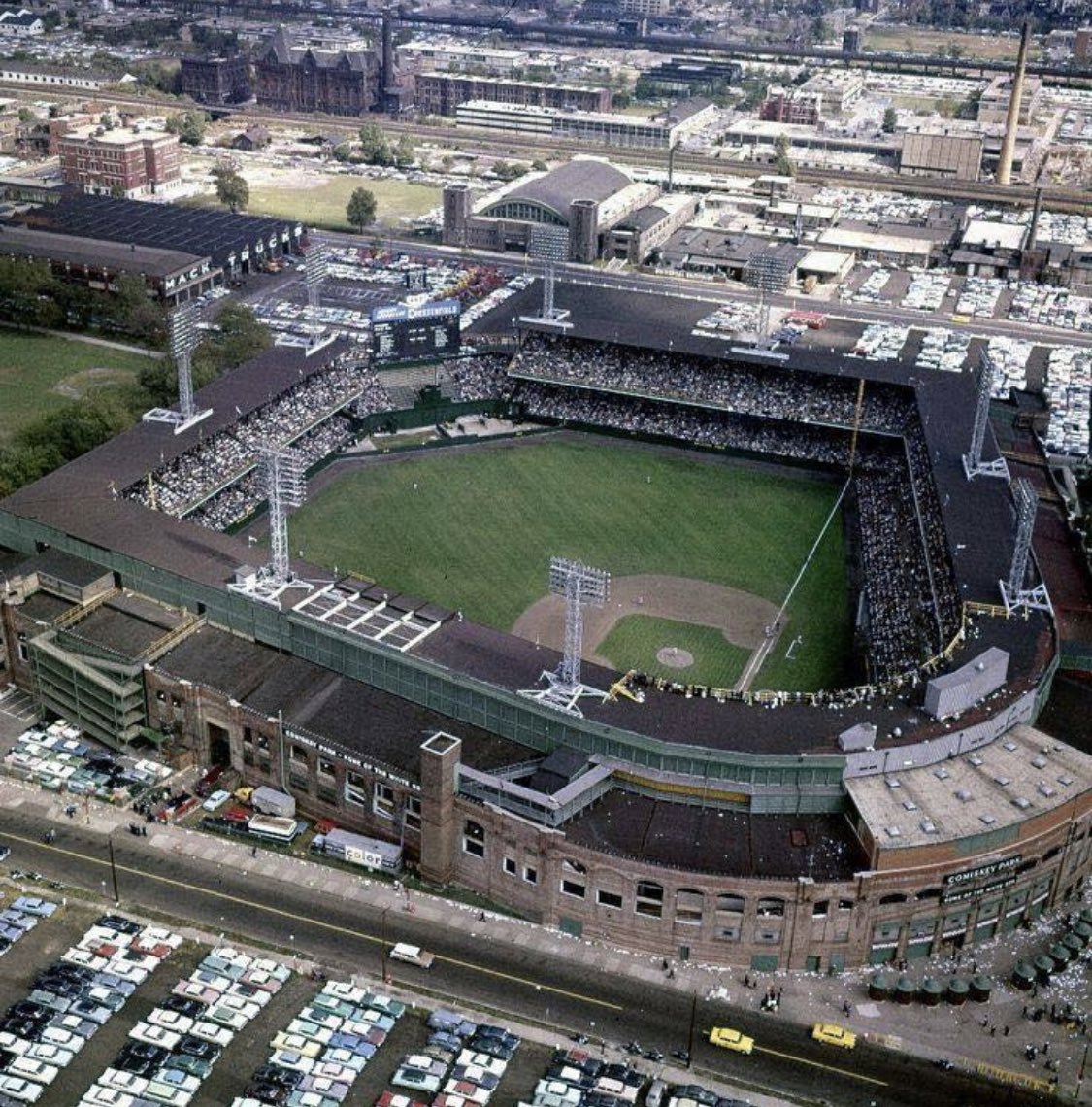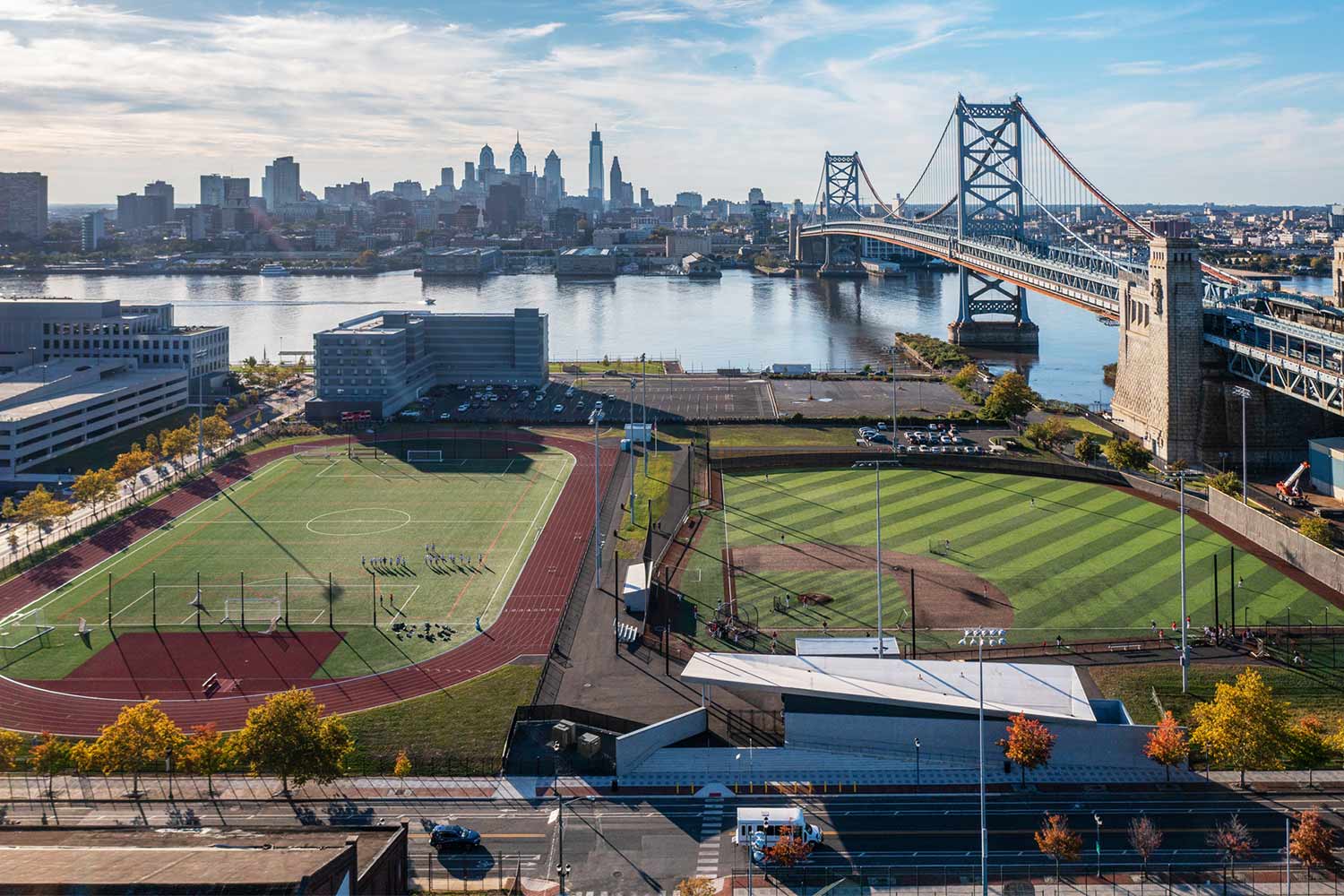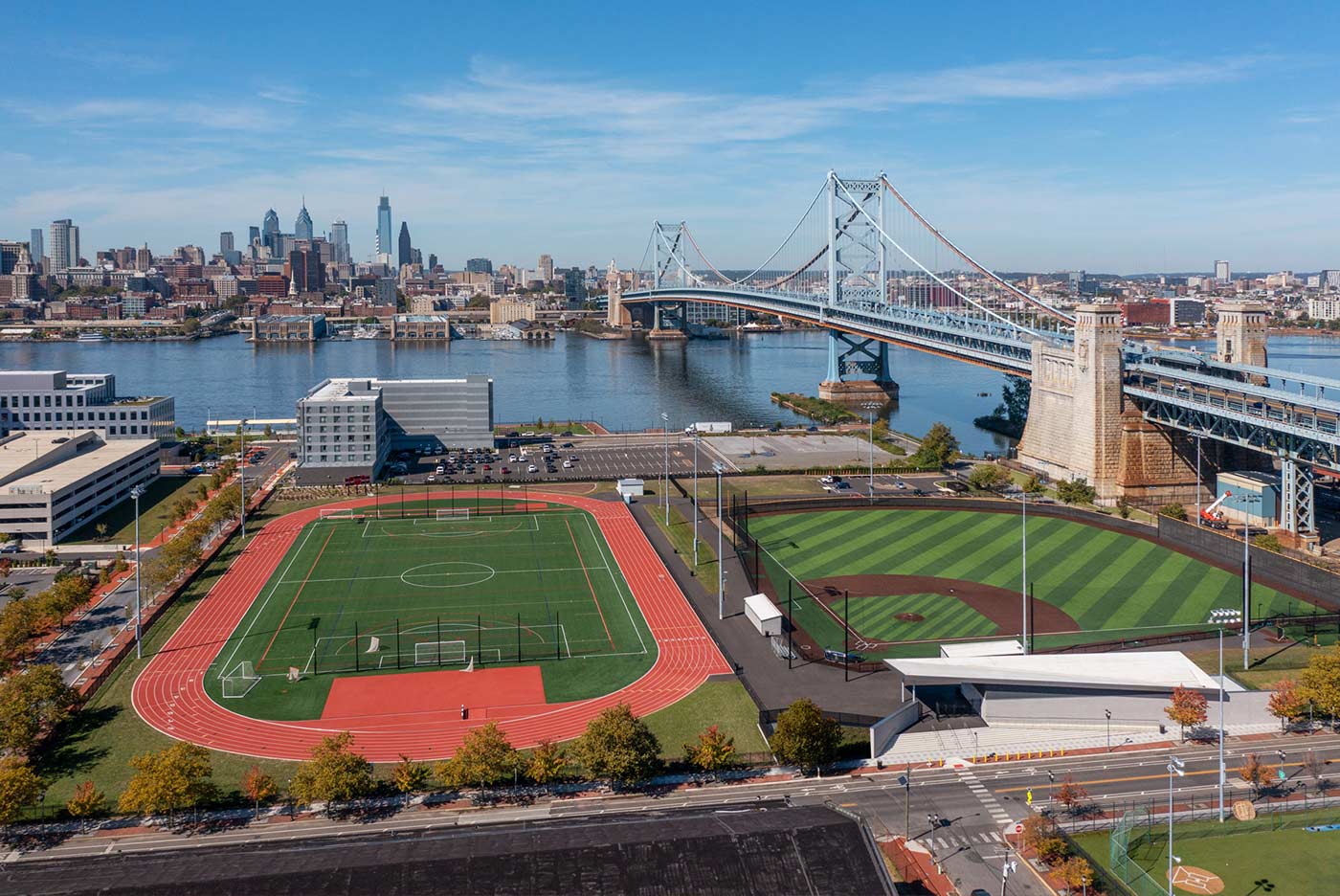Cooper Stadium in Columbus,Ohio
The OES visited Cooper Stadium on June 30, 2011. Minor league baseball has deep roots in Columbus, with its first team, the Columbus Senators, dating back to 1888. The Senators played their home ga…

www.ohioexploration.com
Cooper Stadium
The OES visited Cooper Stadium on June 30, 2011. Minor league baseball has deep roots in Columbus, with its first team, the Columbus Senators, dating back to 1888. The Senators played their home games at Recreation Park, and in 1905, Neil Park, the first concrete and steel stadium in the minor leagues. In 1931, the St. Louis Cardinals took control of the Columbus team and renamed them the Columbus Red Birds. The Red Birds were a top-level minor league baseball team in the American Association from 1931 through 1954. After acquiring the team in 1931, the Cardinals decided their newly acquired team needed a new home. Construction of the team’s new stadium began in 1931 using the same blueprints the Cardinals used to build Red Wing Stadium (or Silver Stadium) in Rochester, New York, two years earlier for another team they owned. The price tag for Red Bird Stadium was $450,000. Red Birds game attendance tripled between 1930 and 1932. The team produced a number of terrific players, including Hall of Famers Enos Slaughter and Billy Southworth. The stadium recorded what would be its smallest attendance ever, 39 people, on April 19, 1939. It was a frigid day, and Columbus went on to lose to Kansas City 5-3. The Red Birds won Association titles in 1933, 1934, 1937, 1941–43 and 1950. After the 1950 season, the Red Birds went into a slump with a series of losing teams and declining attendance. The club relocated to Omaha, Nebraska, in 1955 and was renamed the Omaha Cardinals.
Columbus was not without a team for long. In an effort headed by Harold Cooper, a Triple-A International League team from Ottawa relocated to Columbus in 1955 and began playing at the stadium as the Columbus Jets, thus renaming their venue Jets Stadium. The Jets served as the AAA affiliate of the Kansas City Athletics during their first season and as the Pittsburgh Pirates affiliate from 1957 to 1970. During the Jets era, they won league titles in 1961 and 1967. By 1970, the stadium was in dire need of repair after many years of use. However, the IRS rules that the Jets were a non-profit organization and could not use profits to make the repairs. Unable to secure insurance on the facility, the franchise abruptly moved to Charleston, West Virginia, in 1971 and became the Charleston Charlies. The move left Columbus without an organized baseball team for an extended period of over eighty years.
The stadium stood unused after the Jets’ move through the mid-1970s until the government of Franklin County purchased it. The stadium underwent a $2.6 million renovation, adding skyboxes, new press booths, and overflow bleachers, and was rechristened Franklin County Stadium. In 1977, Franklin County Commissioner Harold Cooper once again led the effort to restore baseball in Columbus and returned the Charleston team to Columbus, forming the Columbus Clippers. The stadium was renamed Cooper Stadium in 1984 to honor Harold Cooper. By then, he had become the President of the International League. 1984 also marked the year that AstroTurf replaced the stadium’s natural grass that had been used since the stadium’s opening in 1932, making Cooper Stadium the first minor league park to have AstroTurf. The artificial turf stayed until 1998, when it was replaced by natural grass.
The Columbus Clippers served as the AAA affiliates of the Pittsburgh Pirates during their first season, then served as the New York Yankees top farm team from 1979 to 2006. The Washington Nationals were the Clippers affiliate during their last season at “The Coop” in 2007–08. The last game played in Cooper Stadium took place on September 1, 2008, against the Toledo Mud Hens in front of a sellout crowd of 16,777, the third largest attendance in the stadium’s history. For the start of the 2009 season, the Columbus Clippers moved to their newly built stadium, Huntington Park, in Columbus’ Arena District and became affiliates of the Cleveland Indians. The Clippers have been a relatively successful franchise, having won the International League’s Governor’s Cup nine times. Their championship titles came in 1979–81, 1987, 1991, 1996, 2010 and 2011.
Cooper Stadium hosted many events over the years other than baseball. Franklin D. Roosevelt kicked off his first presidential campaign in the stadium in 1932. From 1939 to 1942, the stadium was also the home of the Columbus Bullies, a professional football team. The Bullies were members of the American Professional Football Association their first year and became charter members of the newly organized American Football League (along with the Cincinnati Bengals) in their second year. The Bullies won the first two AFL Championships against the Milwaukee Chiefs in 1939 and the New York Americans in 1941. The first Ohio Cup game between the Cincinnati Reds and Cleveland Indians was played in the stadium in 1989, with over 15,000 fans in attendance. Cleveland won 1-0. Music concerts with acts like Aerosmith, Bob Dylan, and Garth Brooks took place at the stadium, along with roller derbies and high school sports games. The stadium even played host to evangelist Billy Graham for over five days in 1993, bringing in more than 150,000 people.
The original structure of Cooper Stadium included seating for 11,000 fans. An additional 4,000 seats were added when the stadium was renovated in 1977, bringing the official capacity to 15,000. Cooper Stadium’s field dimensions were 355 feet at left field, 400 feet at center field, and 330 feet at right field. The future of the stadium was debated for a few years until it was decided to transform the facility into an auto racing and education venue. This plan called for the demolition of the entire southern end of the stadium to make way for the track. Another proposal was to overhaul the stadium to become the Ohio High School Athletic Association stadium for outdoor events like baseball, football, lacrosse, and soccer.
The Franklin County Commissioners sold Cooper Stadium to developer Arshot Investors in 2012 for $3.4 million. The development will house a sports entertainment center, an automotive research and development facility, a half-mile track, a hotel, two restaurants, and seating for 8,000 spectators. Groundbreaking for the venue, to be called SPARC (Sports Pavilion Automotive Research Complex), took place on October 24, 2012. The project will cost an estimated $40 million. As of this posting in summer 2015, the southern end of the stadium has been demolished, and the site is still sitting with no further progress in making the SPARC facility a reality.
Thank you to the Franklin County commissioners for allowing us to photograph the site.
See photo gallery in above link.
